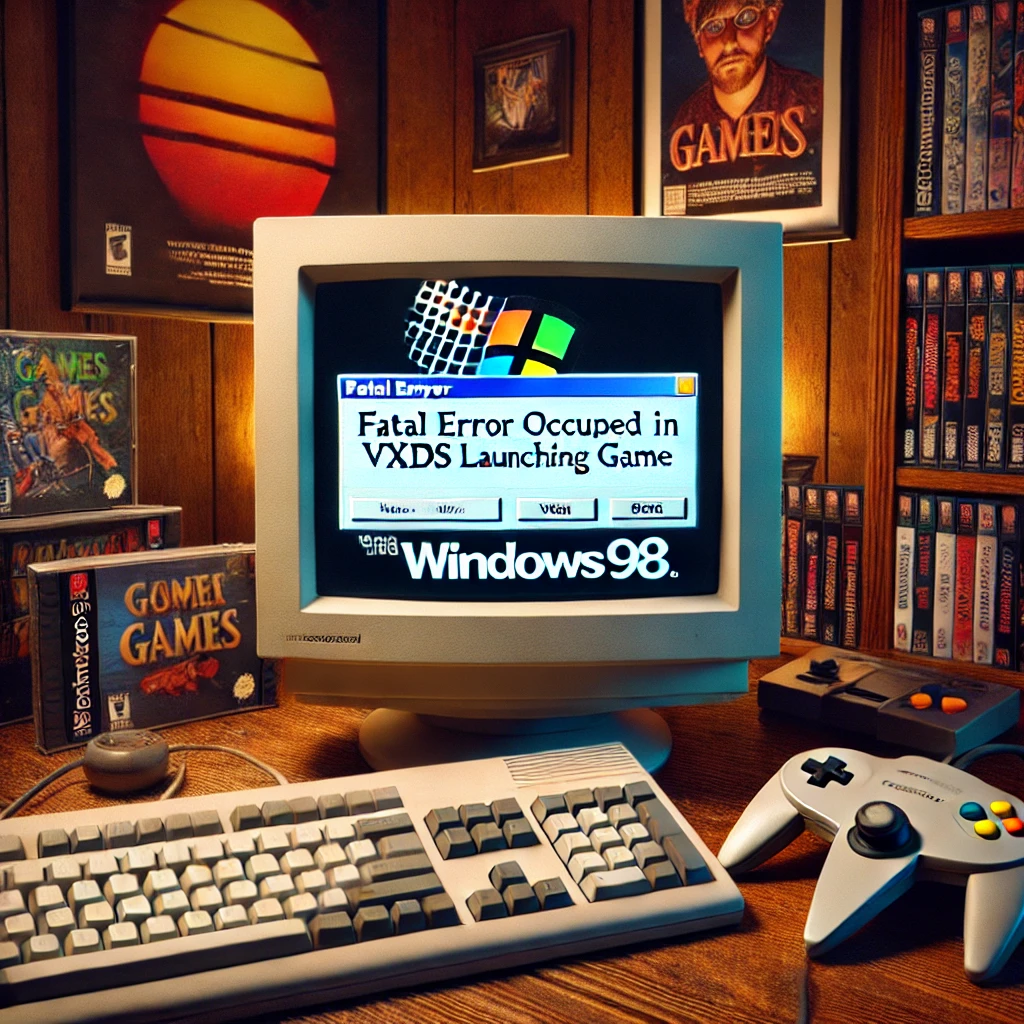Windows 98, an operating system that played a significant role in personal computing history, was widely appreciated for its performance improvements over its predecessor. However, as with any software, it was not free from errors. One of the most perplexing issues users encountered was the “fatal error occurred in VXDs” message while trying to launch games or certain applications. This error not only disrupted the gaming experience but also left users searching for solutions.
What Are VXDs?
VXDs, or Virtual Device Drivers, were a critical part of the Windows 98 architecture. These drivers allowed hardware devices and software applications to interact with the operating system seamlessly. By acting as an intermediary, VXDs provided a virtual environment for applications to function.
However, due to the complexity of managing multiple drivers, conflicts were not uncommon. These conflicts often led to errors, particularly when running resource-intensive tasks like gaming.
Common Causes of the VXDs Fatal Error
Several factors contributed to this error on Windows 98 systems. Understanding these causes can help users identify and address the underlying issues more effectively.
Driver Conflicts
One of the most frequent causes of the VXDs fatal error was driver incompatibility or conflicts. Outdated or corrupted drivers often failed to communicate properly with the operating system, resulting in crashes.
Memory Overload
Games, especially those with advanced graphics, required significant system resources. If the available memory was insufficient or improperly managed, the operating system could fail to allocate the required resources, triggering the error.
Faulty Hardware
Hardware malfunctions, such as damaged RAM or an unstable graphics card, could also lead to fatal errors. Since VXDs were responsible for hardware communication, any instability in the hardware could disrupt the operating system.
Corrupted System Files
Windows 98 relied on a series of system files to maintain stability and functionality. If any of these files became corrupted, it could lead to unexpected errors, including issues with VXDs.
Troubleshooting the VXDs Fatal Error
Addressing this error required a step-by-step approach to identify and resolve the root cause.
Updating Device Drivers
Updating device drivers was one of the most effective ways to resolve VXDs errors. Users could visit the manufacturer’s website to download the latest drivers for their hardware components. Ensuring compatibility with Windows 98 was essential to avoid further conflicts.
Managing System Resources
To avoid memory overload, users could close unnecessary background applications before launching games. Additionally, increasing the system’s RAM, if possible, often provided better performance and stability.
Checking for Hardware Issues
Running diagnostics on the system’s hardware was another important step. Tools like memtest could check the integrity of the RAM, while visual inspections ensured that components like graphics cards were properly seated and undamaged.
Repairing or Reinstalling Windows 98
If system files were corrupted, users had the option to repair or reinstall the operating system. This step replaced damaged files and restored the system to a stable state. It was recommended to back up all important data before proceeding with this solution.
Preventing VXDs Errors
While resolving the VXDs fatal error was crucial, prevention was equally important. By following best practices, users could minimize the risk of encountering such issues in the future.
Regular Maintenance
Performing regular system maintenance, such as disk cleanups and defragmentation, helped optimize the system’s performance. It also ensured that files were properly organized and accessible.
Using Compatible Software
Since Windows 98 had limited support for modern applications, users were advised to install software and games that were explicitly compatible with the operating system. This reduced the likelihood of driver and system conflicts.
Monitoring System Health
Using tools to monitor the system’s health allowed users to identify potential issues before they became critical. Programs that checked for hardware stability and software integrity were especially helpful.
Challenges with Older Operating Systems
As technology advanced, older operating systems like Windows 98 faced increasing challenges in compatibility and functionality. Hardware manufacturers stopped supporting outdated platforms, making it difficult to find updated drivers or replacements for faulty components.
Additionally, the absence of automatic updates required users to manually manage their systems, which could be time-consuming and complex. These challenges emphasized the importance of transitioning to modern operating systems when possible.
Conclusion
The “fatal error occurred in VXDs” issue in Windows 98 highlighted the complexities of managing an older operating system. While the error was frustrating for users, understanding its causes and implementing effective solutions often resolved the problem.
By updating drivers, managing system resources, and maintaining hardware stability, users could minimize the risk of encountering this error. However, as the limitations of older systems became more apparent, transitioning to newer platforms offered a more reliable and efficient solution for modern computing needs.
Windows 98 may no longer be widely used, but its legacy remains significant. Addressing errors like VXDs issues reflects the continuous effort required to keep systems functional and relevant, even in challenging technological landscapes.
